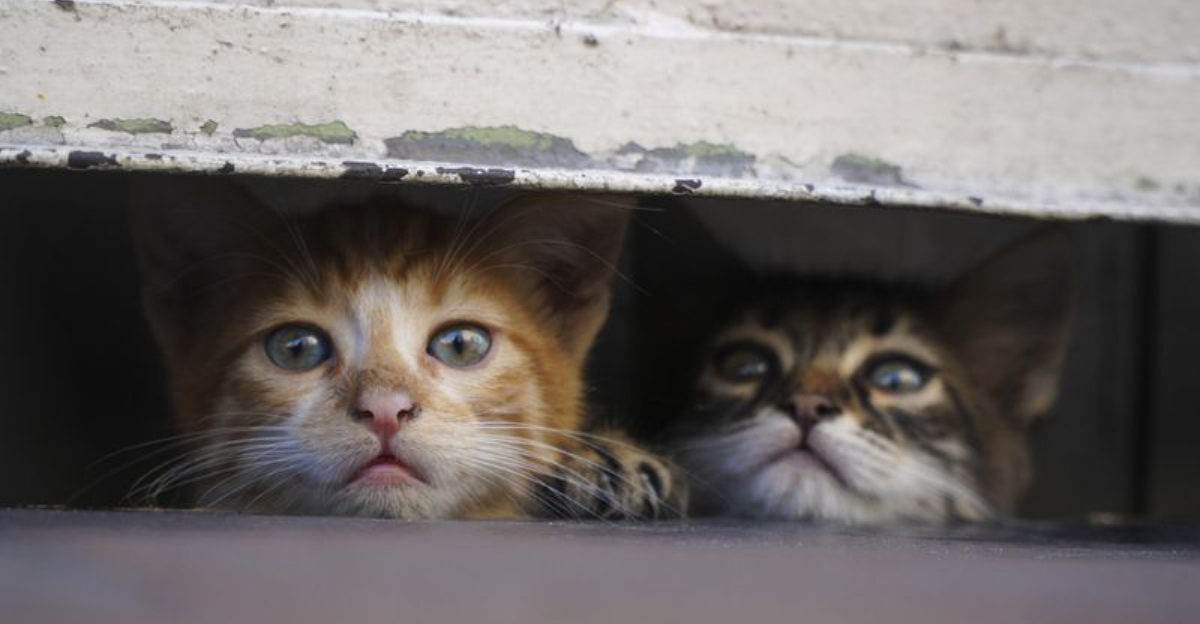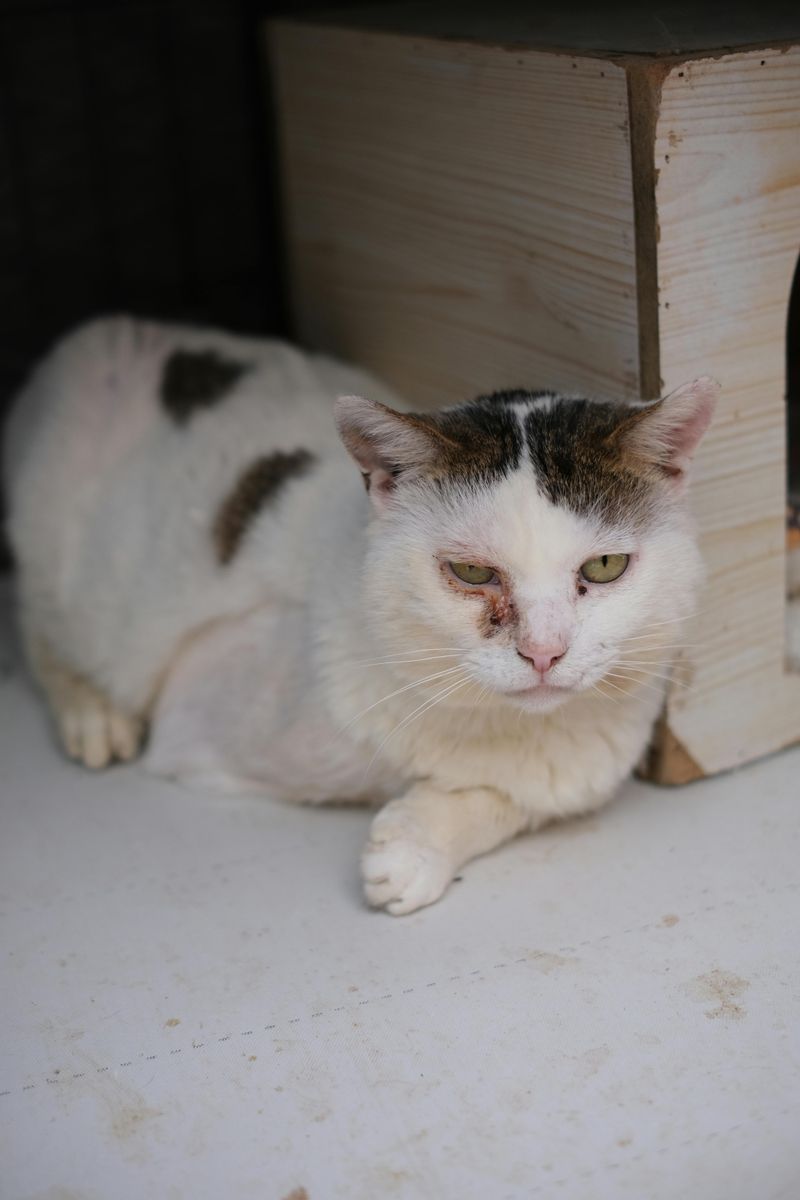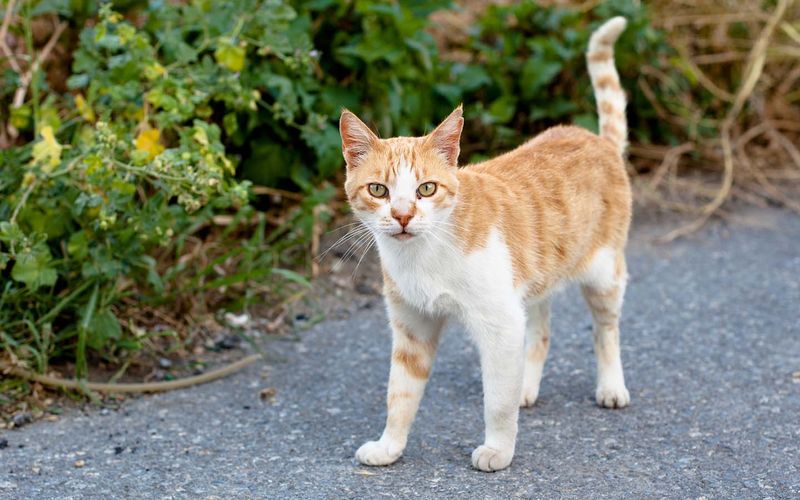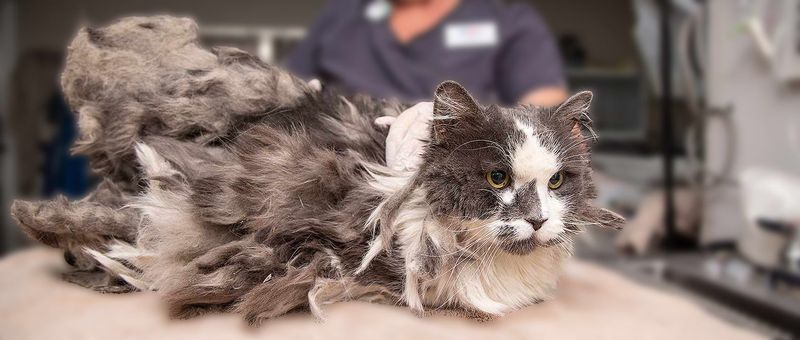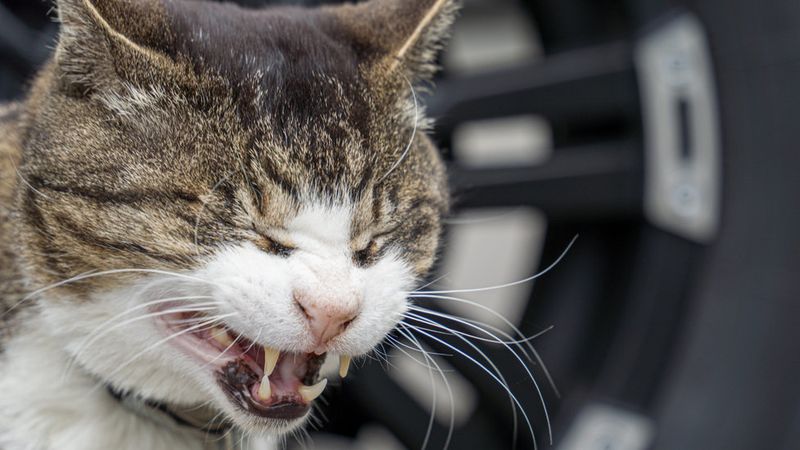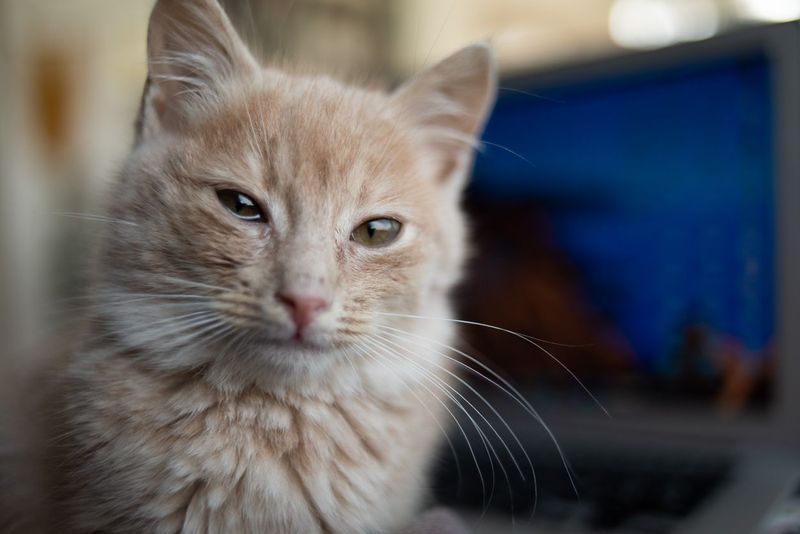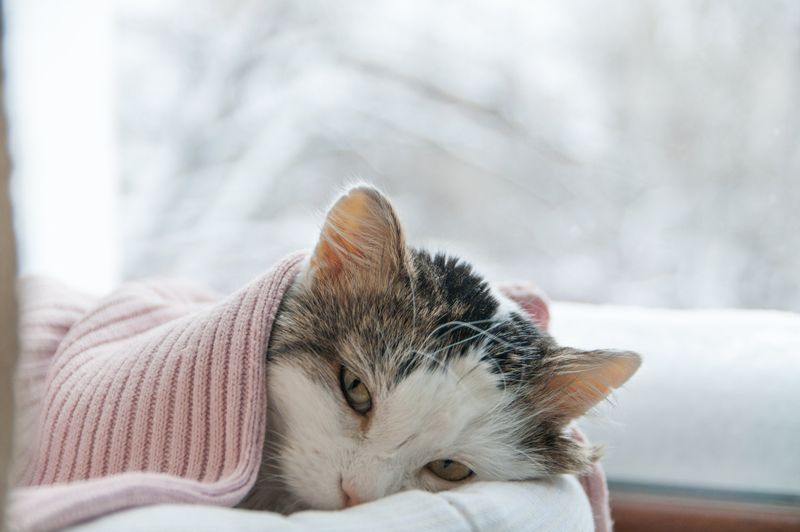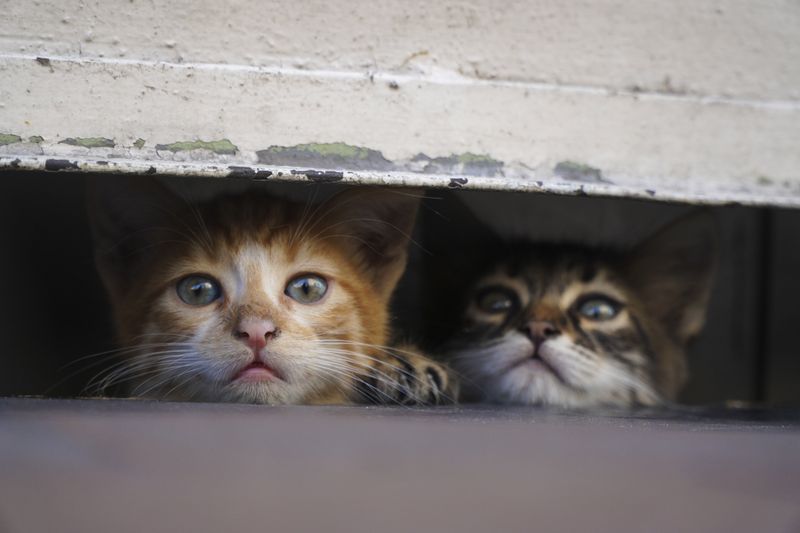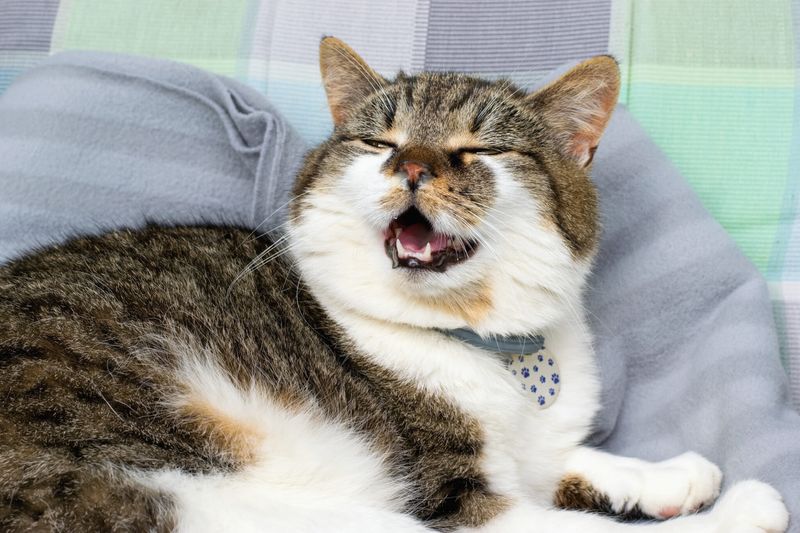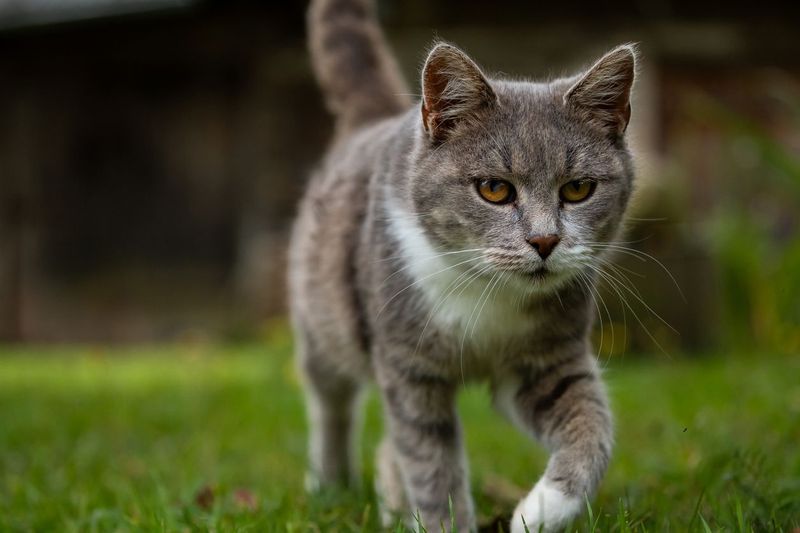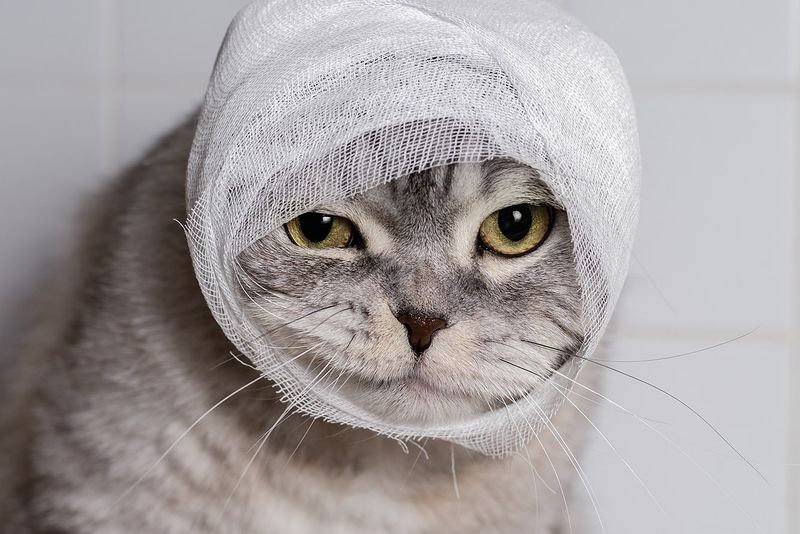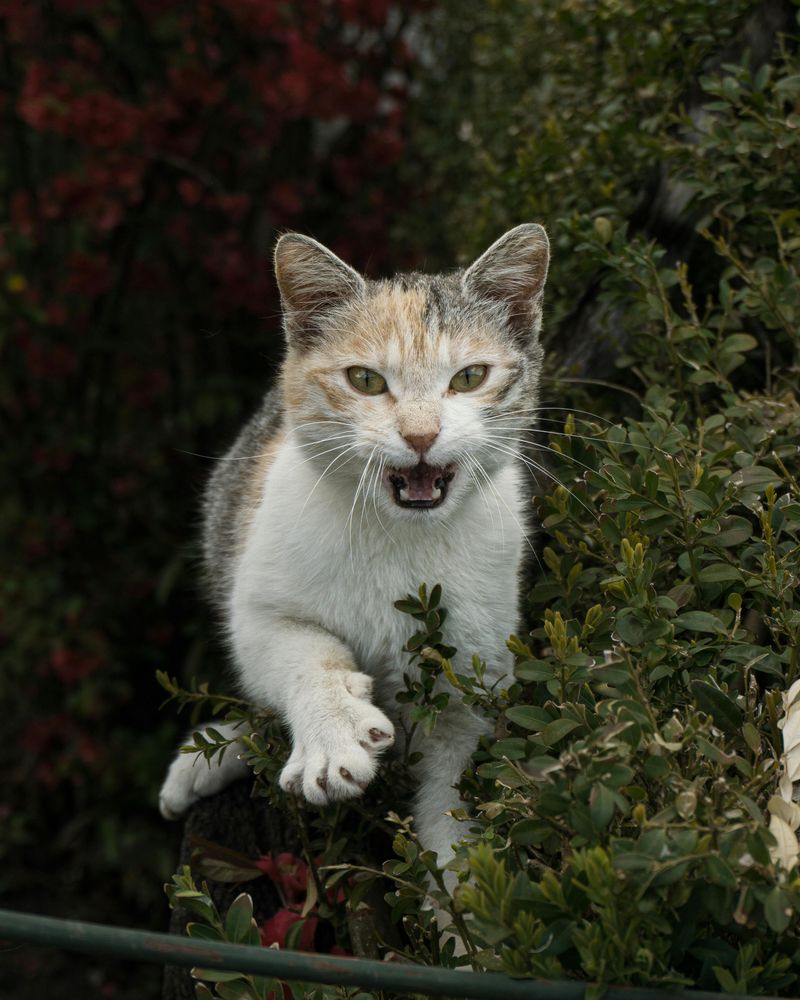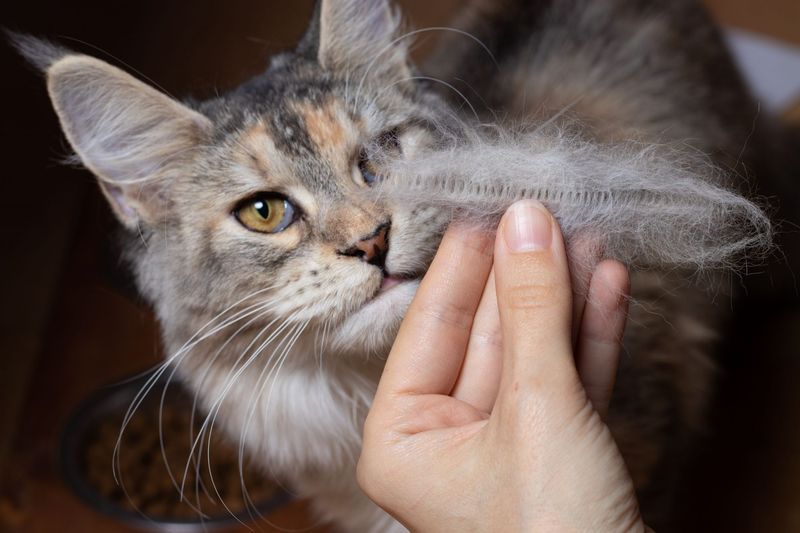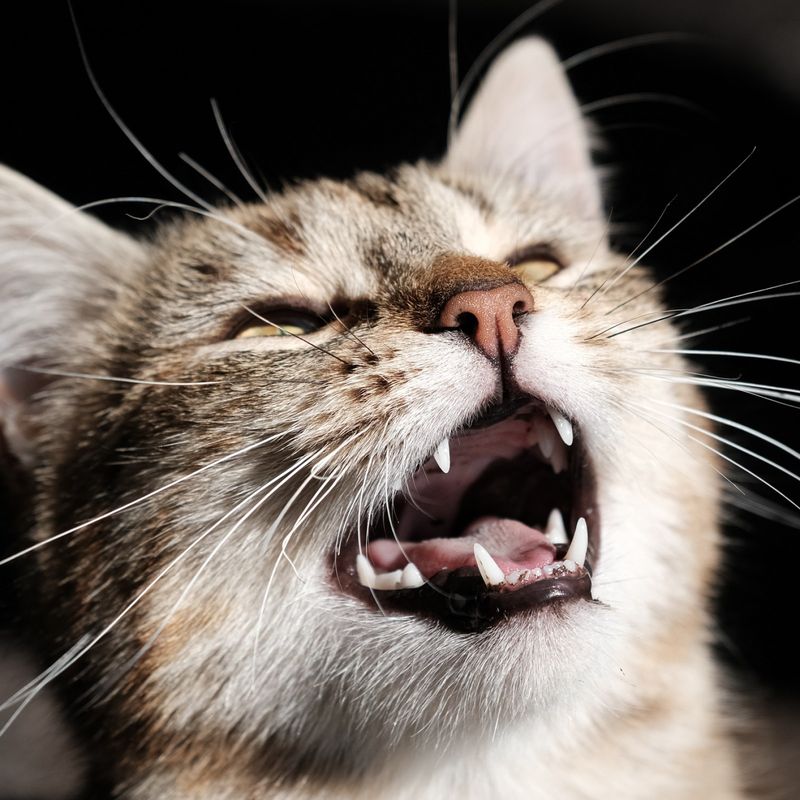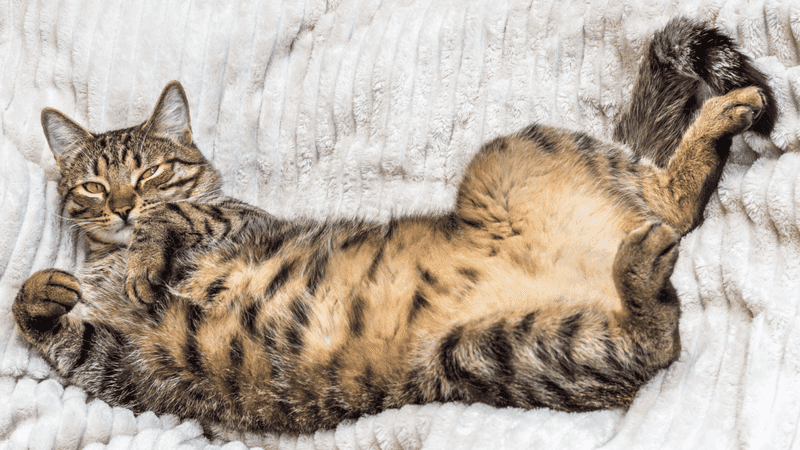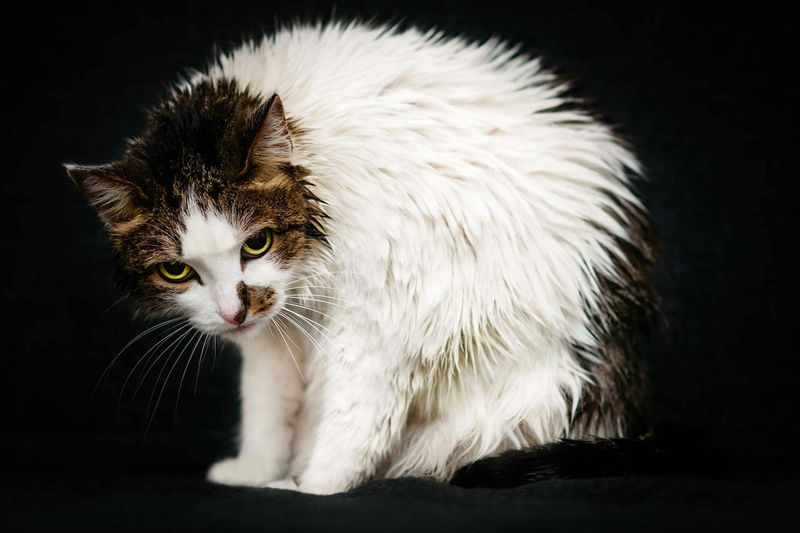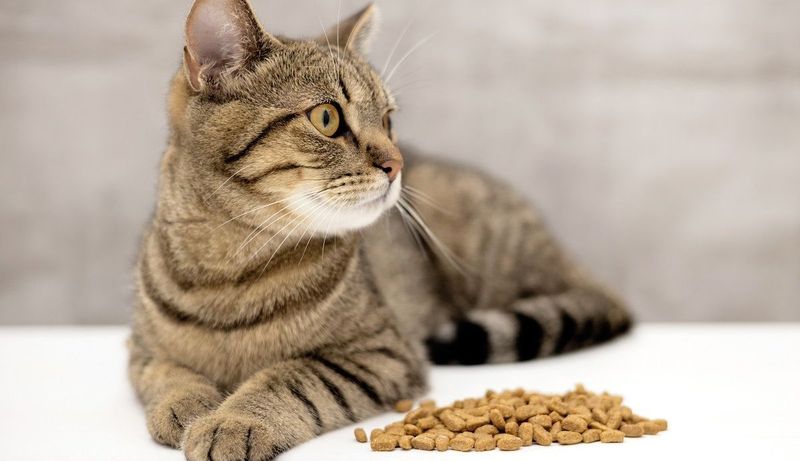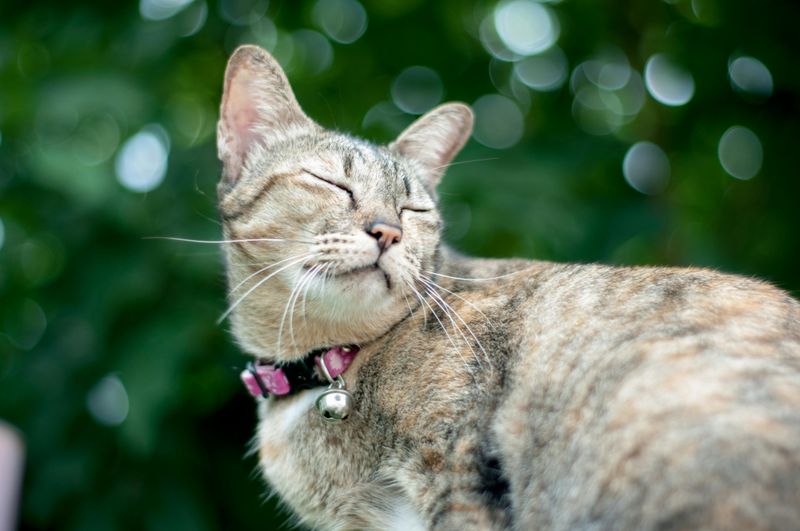📖 Table of Content:
- 1. Visible Injuries
- 2. Severe Weight Loss
- 3. Matted or Dirty Fur
- 4. Frequent Sneezing or Runny Nose
- 5. Crusted or Watery Eyes
- 6. Lethargy or Weakness
- 7. Excessive Hiding
- 8. Labored Breathing
- 9. Severe Limping or Difficulty Walking
- 10. Open Sores or Skin Issues
- 11. Unusual Aggression or Fearfulness
- 12. Excessive Scratching or Hair Loss
- 13. Unusual Vocalizations
- 14. Swollen Belly
- 15. Persistent Shivering
- 16. Lack of Interest in Food
- 17. Collar but No ID or Lost Appearance
Outdoor cats are often independent and resourceful, but that doesn’t mean they never need help. Whether they are strays, feral cats, or lost pets, certain signs can indicate distress, illness, or injury. Knowing what to look for can make a difference in saving a cat’s life or improving its well-being.
Many outdoor cats face challenges such as harsh weather, lack of food, and threats from other animals. While some may appear healthy, subtle signs of suffering can go unnoticed without careful observation. Recognizing these signs early can help you determine whether a cat requires medical attention, food, or shelter.
If you come across a cat that seems unwell, injured, or in distress, understanding the warning signals is crucial. Some cats may be too weak to seek help on their own, making human intervention essential. By watching for these 17 key signs, you can take the right steps to provide assistance when an outdoor cat truly needs it.
1. Visible Injuries
If you notice cuts, wounds, or signs of bleeding, it’s important to approach the cat carefully and assess the situation. Cats are often independent, but visible injuries can make them vulnerable to infections. Gently try to contain the cat and provide initial care if safe to do so. If the injuries appear severe, it’s advisable to contact a veterinarian for professional help. Outdoor cats are prone to fights or accidents, so observing any physical damage is crucial for their wellbeing. Remember, safety first when helping injured cats.
2. Severe Weight Loss
Severe weight loss in an outdoor cat can signal underlying health issues or lack of access to food. If a cat appears noticeably thinner with protruding bones, it may be suffering from malnutrition or illness. Approach gently to determine if they are willing to accept food. Offering high-nourishment meals can help evaluate their appetite and condition. If the cat continues to lose weight or refuses to eat, it’s a sign to seek veterinary assistance. Monitoring the cat’s weight and feeding habits can significantly impact their health and recovery. Always aim to provide a safe and calm environment when approaching.
3. Matted or Dirty Fur
Cats usually maintain their coats, so dirt and knots can signal distress or health issues. Approach the cat slowly to avoid startling it, and check for other signs of neglect. Offering gentle grooming can help improve their condition and comfort. However, if the fur is severely matted, it might require professional grooming or veterinary care. Observing their overall appearance and behavior is vital to determine if further intervention is needed. Caring for their coat can significantly enhance the cat’s quality of life.
4. Frequent Sneezing or Runny Nose
Frequent sneezing or a runny nose in an outdoor cat can indicate respiratory infections or allergies. If you notice these symptoms, it’s important to monitor their condition and behavior closely. Try to provide a draft-free shelter to prevent further exposure to cold weather. If symptoms persist or worsen, consulting a veterinarian for diagnosis and treatment is recommended. Offering fresh water and keeping the environment clean can also support their recovery. Respiratory issues can affect a cat’s energy and wellbeing, so timely intervention is crucial to ensure their health and comfort.
5. Crusted or Watery Eyes
Crusted or watery eyes in an outdoor cat may suggest infections or allergies. It’s essential to observe if the condition affects one or both eyes, as this can guide the necessary action. Gently cleaning the area with a damp cloth can provide temporary relief. However, if the issue persists, veterinary attention is necessary to prevent long-term damage. Ensure the cat has a clean environment to reduce exposure to irritants. Eye problems can impact their vision and comfort, so addressing these symptoms promptly can significantly improve their quality of life and health.
6. Lethargy or Weakness
If a usually active cat is suddenly inactive, it may be struggling with illness or fatigue. Approach the cat gently to assess their responsiveness and overall demeanor. Providing food and water can help determine if they are in distress. Persistent lethargy or lack of interest in their surroundings warrants a veterinary evaluation. Observing changes in their activity level can offer vital clues about their health. Ensuring access to a safe resting area can aid in their recovery and wellbeing.
7. Excessive Hiding
Excessive hiding in an outdoor cat can suggest fear, stress, or illness. Cats naturally seek shelter, but prolonged hiding can indicate deeper issues. Monitor their hiding spots and try to gently coax them out with food or toys. Observe their behavior when they emerge; signs of stress or fear may require intervention. Creating a safe and comforting environment can encourage them to come out. If hiding persists, consulting with a veterinarian or animal behaviorist can provide insights and solutions. Being attentive to their emotional wellbeing is as crucial as their physical health.
8. Labored Breathing
If you notice rapid or strained breathing, observe the cat’s posture and activity level. Gently attempt to offer water or a calm space to help them relax. Immediate veterinary attention is crucial if breathing difficulties persist. Keeping the environment quiet and stress-free can support their recovery. Labored breathing can quickly escalate into more serious conditions, so timely action is essential to ensure the cat’s health and safety. Always prioritize their comfort and access to medical care.
9. Severe Limping or Difficulty Walking
Any difficulty walking in an outdoor cat may indicate injury or joint issues. If a cat struggles to move, carefully assess their limbs for swelling or visible trauma. Avoid forcing them to walk, and provide a soft surface for rest. If the limping does not improve, it’s essential to consult a veterinarian for a proper diagnosis. Temporary restrictions on movement can prevent further injury. Observing their mobility and comfort level can guide necessary interventions. Offering supportive care and monitoring improvements can greatly enhance their recovery and quality of life.
10. Open Sores or Skin Issues
Open sores or skin issues on an outdoor cat can be indicative of infections or parasites. Conduct a gentle examination to identify the extent of the problem. Avoid touching the sores directly to prevent further irritation or infection. Seeking veterinary care is crucial to address any underlying conditions and prevent complications. Keeping the area clean and monitoring for changes in the skin can aid in their recovery. Providing a stress-free environment can support healing and improve their comfort. Timely intervention can prevent more severe health problems and enhance their overall wellbeing.
11. Unusual Aggression or Fearfulness
Unusual aggression or fearfulness in an outdoor cat can signal stress, pain, or environmental changes. If a typically calm cat becomes defensive or anxious, it’s important to assess their surroundings for potential stressors. Approaching with caution and maintaining a safe distance is advisable. Providing a secure and familiar environment can help reduce anxiety. If the behavior persists, consulting a veterinarian or behaviorist can offer solutions. Understanding and addressing the root cause of their aggression can enhance their emotional health and interaction with humans and other animals.
12. Excessive Scratching or Hair Loss
Constant itching and fur loss in an outdoor cat are common signs of skin problems, including allergies or parasite infestations. Observe the cat’s behavior and any visible skin changes, such as redness or irritation. Regular grooming and flea control can alleviate some symptoms. If the scratching persists, a veterinary visit is necessary to identify and treat underlying issues. Maintaining a clean environment can also help reduce allergens and irritants. Addressing skin problems promptly can improve the cat’s comfort and prevent further health complications. Ensuring proper care and attention to their skin can enhance their overall wellbeing.
13. Unusual Vocalizations
An outdoor cat that vocalizes more than usual may be expressing discomfort, hunger, or a need for attention. If a cat is meowing more frequently than normal, paying close attention to its behavior and environment can help identify the cause. Providing food or comfort may help calm excessive vocalization, but persistent meowing could indicate a deeper issue. If the vocalizations continue, consulting a veterinarian may be necessary to rule out any underlying medical concerns. Understanding the reasons behind their vocal behavior allows for appropriate responses to their needs. Being attentive to their communication patterns can strengthen your bond.
14. Swollen Belly
A swollen belly in an outdoor cat may suggest internal issues, pregnancy, or parasites. If a cat appears bloated or uncomfortable, it’s important to monitor their behavior and appetite. Gently feeling the abdomen can help assess the condition. Immediate veterinary care is recommended to diagnose and treat the cause of swelling. Ensuring the cat is in a comfortable environment can reduce stress and aid recovery. Timely intervention can prevent complications and improve their health. Being observant of physical changes can help provide the necessary care and support for their wellbeing.
15. Persistent Shivering
In this case, it’s crucial to provide warmth and shelter immediately. Wrapping them in a blanket or offering a warm spot can help stabilize their condition. If shivering persists, seeking veterinary advice is essential to rule out underlying health issues. Ensuring they have access to a warm and safe environment can support recovery and comfort. Monitoring their condition closely can prevent more severe health problems and ensure their wellbeing.
16. Lack of Interest in Food
If a cat refuses to eat, observe their behavior and check for other symptoms like lethargy or weight loss. Offering different types of food or warm meals can sometimes entice them to eat. Persistent refusal to eat needs veterinary evaluation to address potential health concerns. Ensuring a calm feeding environment can also encourage better eating habits. Understanding their dietary preferences and health status can significantly impact their recovery and overall health.
17. Collar but No ID or Lost Appearance
An outdoor cat with a collar but no ID tag might be lost or separated from its owner. If you encounter such a cat, approach them calmly to check for any identifying features or microchips. Providing temporary shelter and food can help keep them safe while attempting to locate the owner. Posting notices in local areas or online forums can assist in reuniting them. Ensuring their safety and comfort during this period is essential. Helping a lost cat reconnect with its owner can bring peace of mind to both the cat and the human involved.
